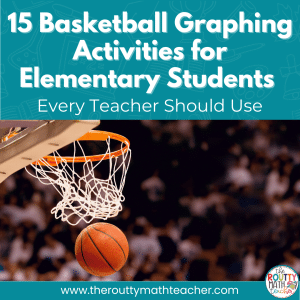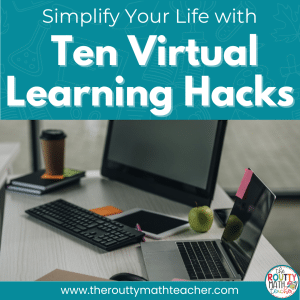
Math Stations Made Easy
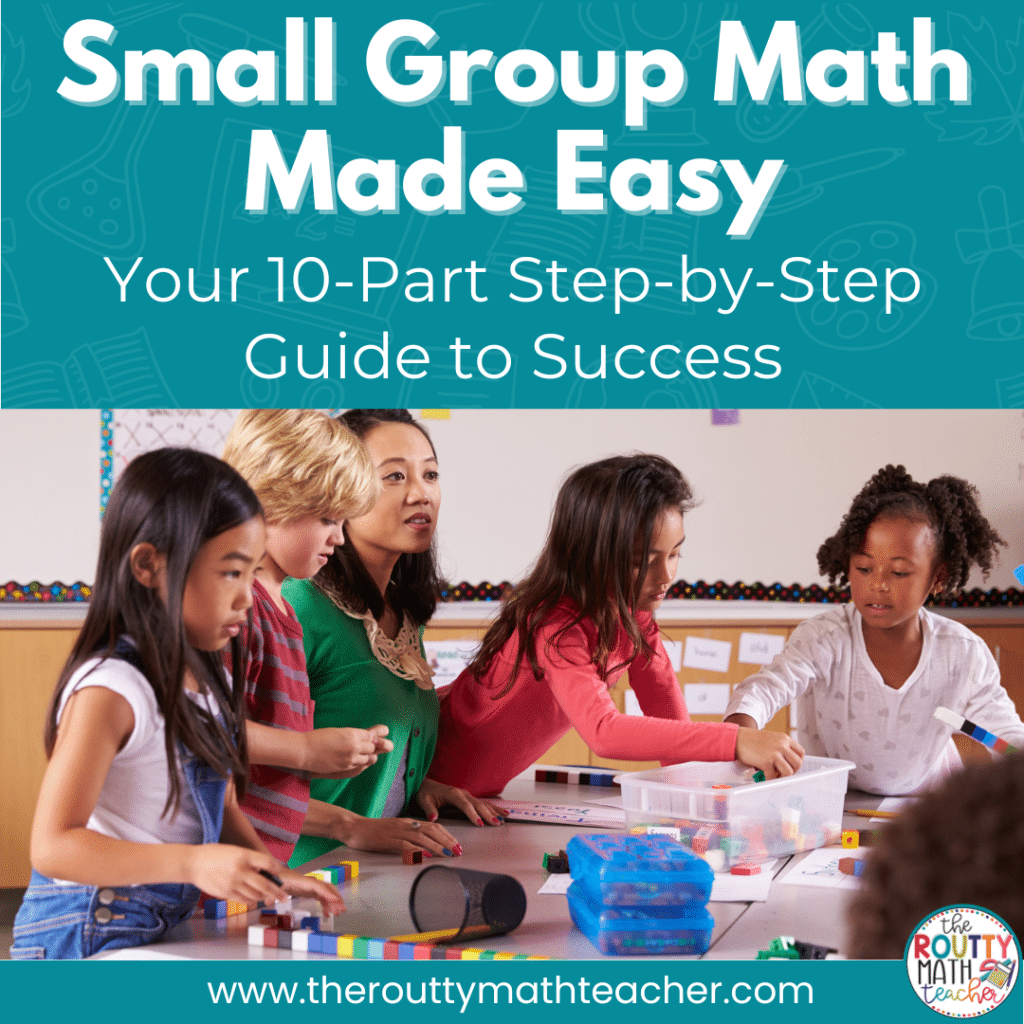
Math stations have become a popular instructional approach in upper elementary classrooms, providing students with an engaging and interactive learning environment. In this comprehensive guide, we will explore the concept of math stations, their benefits, how to set them up, activity ideas, differentiation strategies, progress monitoring techniques, technology integration, essential materials, common challenges, and best practices for implementing math stations effectively.
My husband and I went to the beach in Corpus Christi, Texas for our first Spring Break together.
And, as Spring Break tends to be here in Texas, it was cold– like highs in the 70s. (Okay, I know this is short-sleeved t-shirts and shorts weather for some of you, but not in Texas.)
It was too windy and cold to go swimming or hang out on the beach, so we filled our days with other activities, like horseback riding.
As a child, I had the opportunity to ride horses at the zoo and even on a Girl Scouts trip.
For years, I had fantasized about getting back on a horse again. So, when the hotel told us about an opportunity to ride horses on the beach, I said, “Sign us up!”
When we arrived at the stables, I immediately started second-guessing my decision.
They were big animals. I didn’t remember them being so big!
To say I was nervous when they had me hop onto the saddle is an understatement.
I tried to look brave for my husband, but I was terrified. 😨
When the trip started, my horse stayed alongside the other horses and was pretty easy to ride, but on the way back to the stables, my horse decided to take the reins.
Before I knew what happened, my horse was off the trail and wandering around in the weeds.
I didn’t know what to do. I was stuck in the weeds with this large animal and had no idea how to get him back on track.
And you know what? He knew that too.
The Big Picture Roadmap
You would be surprised by the number of teachers I work with who don’t have a big-picture plan for small group math instruction.
The reason? No direction. That’s why having a big-picture plan is essential for every upper elementary school math teacher.
To help, I created this guide to share a big-picture plan to see how you can create an organized management system for small-group math instruction to keep all students engaged and on task!
In this comprehensive guide to math stations, I address the following topics.
A. What are math stations and how do they work?
B. What are the benefits of using math stations in the classroom?
C. How do you set up and organize math stations?
D. What activities can be used in math stations?
E. How can math stations be used to differentiate instruction?
F. How can you manage and monitor student progress during math stations?
G. How can technology be integrated into math stations?
H. What materials and resources are needed to start math stations in the classroom?
I. What are some common challenges when implementing math stations in the classroom?
J. What are some best practices for effectively using math stations in the classroom?
Note: While some teachers may find it beneficial to read the entire post, I recommend using the headings to select topics that are most relevant for you and your classroom.
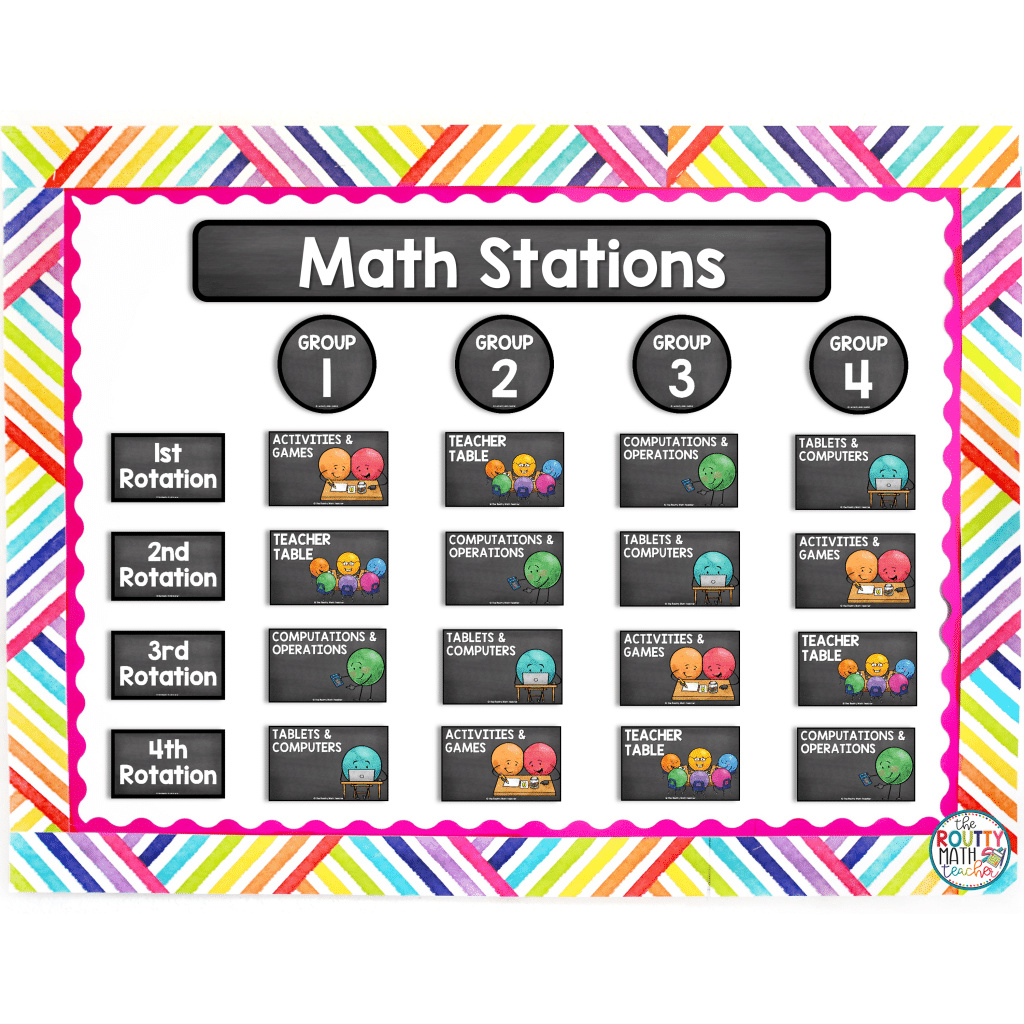
A. What are Math Stations and How Do They Work?
Math stations are small group math activities where students engage in independent or collaborative activities to reinforce and practice math concepts. These stations typically involve hands-on, interactive, and self-directed tasks.
Students can explore and solidify their understanding of mathematical concepts by rotating through various stations, moving from table to table, or selecting activities, called workstations, where they go to a designated location in the classroom, retrieve an activity, and return to their seat or other space to complete the activity.
B. Benefits of Using Math Stations in the Classroom
Incorporating math stations into the classroom provides many benefits that enhance students’ mathematical learning experiences and create a positive and dynamic classroom environment that supports students’ mathematical development and success.
Here are the benefits of using math stations in the classroom:
- Increased Student Engagement and Motivation:
Math stations provide a hands-on and interactive learning experience that captivates students’ attention. By offering a variety of activities and materials tailored to meet individual needs, students are more likely to stay engaged and motivated during the rotation. Exploring math concepts more actively and independently helps foster a genuine interest in learning and a positive attitude toward mathematics. - Promotes Collaborative Learning:
Math stations create an environment conducive to collaboration and peer interaction. Students can work together in small groups or pairs, discussing and solving problems, explaining concepts to one another, and sharing their strategies. Collaborative learning strengthens their understanding of math and improves their communication and teamwork skills. - Allows for Differentiated Instruction:
One of the most significant advantages of math stations is the ability to provide differentiated instruction to meet the diverse needs of students. Teachers can offer activities at varying difficulty levels, ensuring each student is appropriately challenged. By tailoring tasks to individual abilities, math stations enable students to work at their own pace, fostering a sense of achievement and promoting a growth mindset. - Enhances Problem-Solving and Critical Thinking Skills:
Math stations often incorporate problem-solving tasks, puzzles, and games that require students to think critically and apply their mathematical knowledge to real-world situations. Students develop essential problem-solving strategies through these activities, such as analyzing problems, making connections, logical reasoning, and finding multiple solution pathways. Math stations encourage students to think flexibly and develop a deeper understanding of mathematical concepts. - Offers Individualized Practice and Reinforcement:
Math stations allow students to practice and reinforce math concepts individually. Through independent work at math stations, students can revisit previously taught skills, consolidate their understanding, and build fluency. This individualized practice helps students develop confidence in their abilities and strengthen their mathematical proficiency. - Improves Student Autonomy and Self-Regulation:
Math stations promote student autonomy as they take ownership of their learning. Students can make choices, manage their time, and decide how to approach the tasks. They develop self-regulation skills, such as setting goals, planning their work, and reflecting on their progress. Math stations empower students to become independent learners and foster a sense of responsibility for their academic growth.
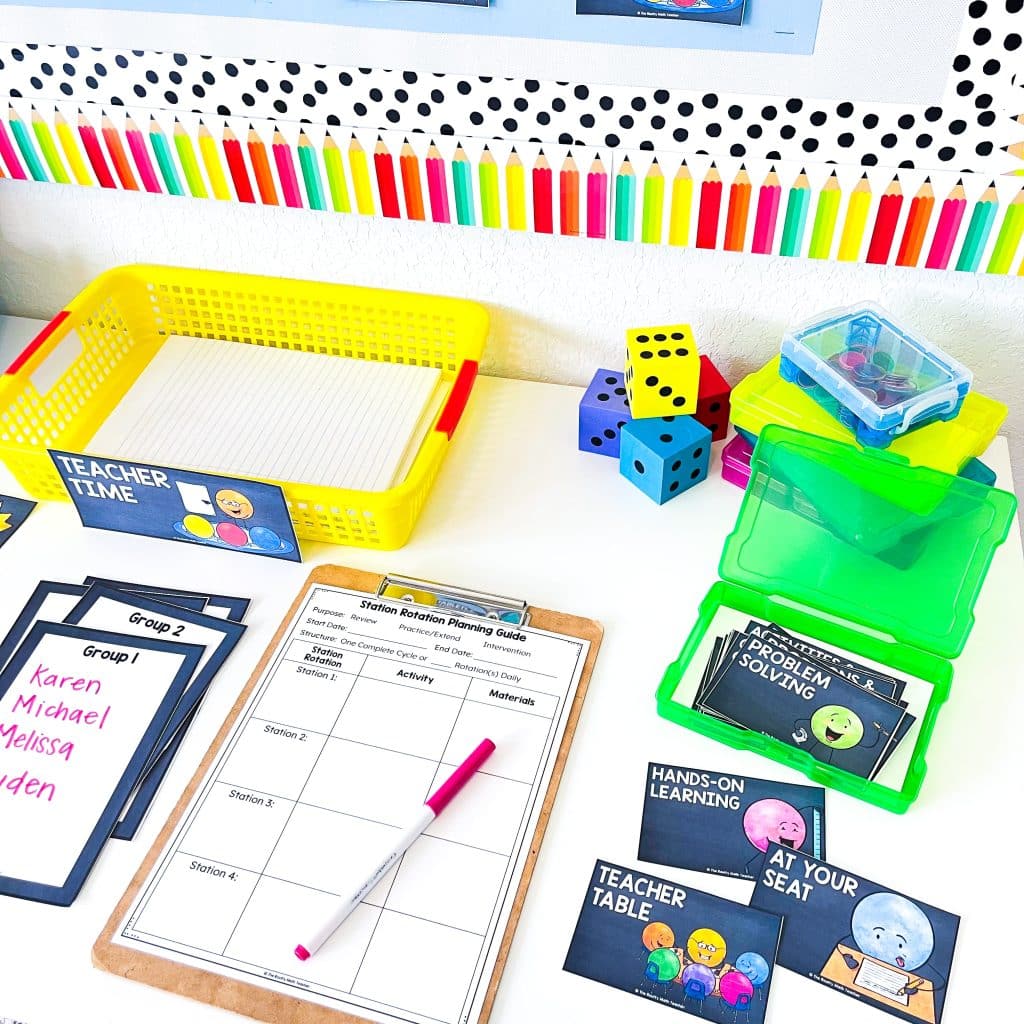
C. Setting up and Organizing Math Stations
Setting up and organizing math stations effectively is essential for smooth implementation and optimal student engagement. Clear organizational systems and smooth transitions enable students to immerse themselves in the learning experience, promoting active engagement and maximizing their opportunities for mathematical growth.
Consider the following key aspects when setting up and organizing math stations in your classroom:
Determine the Number of Stations and Group Size
The number of math stations you create will depend on your class size and available space; however, 3-6 math stations are typical. To determine the best number of stations for your classroom, consider how many students to group and divide the number of students in your class by your optimal group size. While most station activities will accommodate many students, smaller groups foster better collaboration and allow for more individualized attention.
Label and Organize Materials
Organize materials for each math station clearly and consistently. Label containers or shelves with the station names or numbers, ensuring students can quickly locate and return materials. Use color coding or visual cues to make organization and accessibility easier.
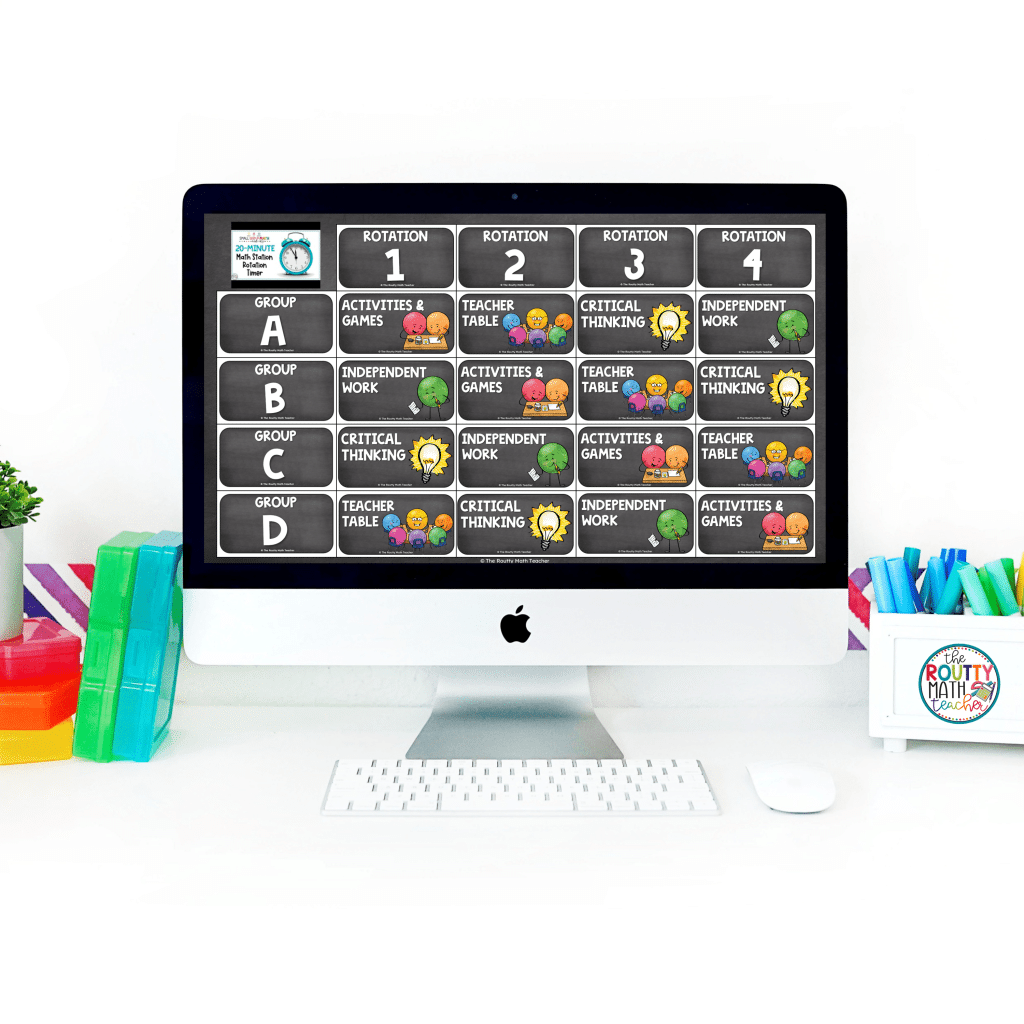
Create a Rotation Schedule
Develop a rotation schedule to ensure all students have equal opportunities to engage with each math station. A visual rotation chart or digital rotation board can indicate the rotation order and timing. Alternatively, consider implementing a rotation system that allows students to move independently or with minimal disruption to other groups as students do with workstations.
Establish Expectations for Transitions
Communicate and model expectations for transitioning between math stations. Teach students the routines and procedures for moving from one station to another, including how to clean up materials, signal readiness to rotate, and transition quietly and efficiently. Reinforce these expectations consistently to promote smooth transitions.
Designate Specific Areas or Storage Systems
Allocate specific areas in your classroom for math stations, ensuring each station has a designated space. Consider creating stations at groups of student desks or in different corners or classroom sections, utilizing tabletops, floor spaces, or other surfaces. Additionally, create storage systems, such as bins or drawers, where students can easily access and return materials.
Communicate Station Instructions
Communicate instructions and expectations for each math station. Create visual cues, anchor charts, or written instructions to guide students’ understanding of the tasks or activities they should engage in at each station. Include any necessary materials, rules, or guidelines for completing the tasks effectively.
Rotate and Refresh Activities
Regularly rotate the activities or tasks at math stations to keep the learning experience fresh and engaging. Introduce new challenges, incorporate different materials, or modify existing activities to provide variety and cater to different learning styles. This helps sustain students’ interest and promotes ongoing exploration and growth.
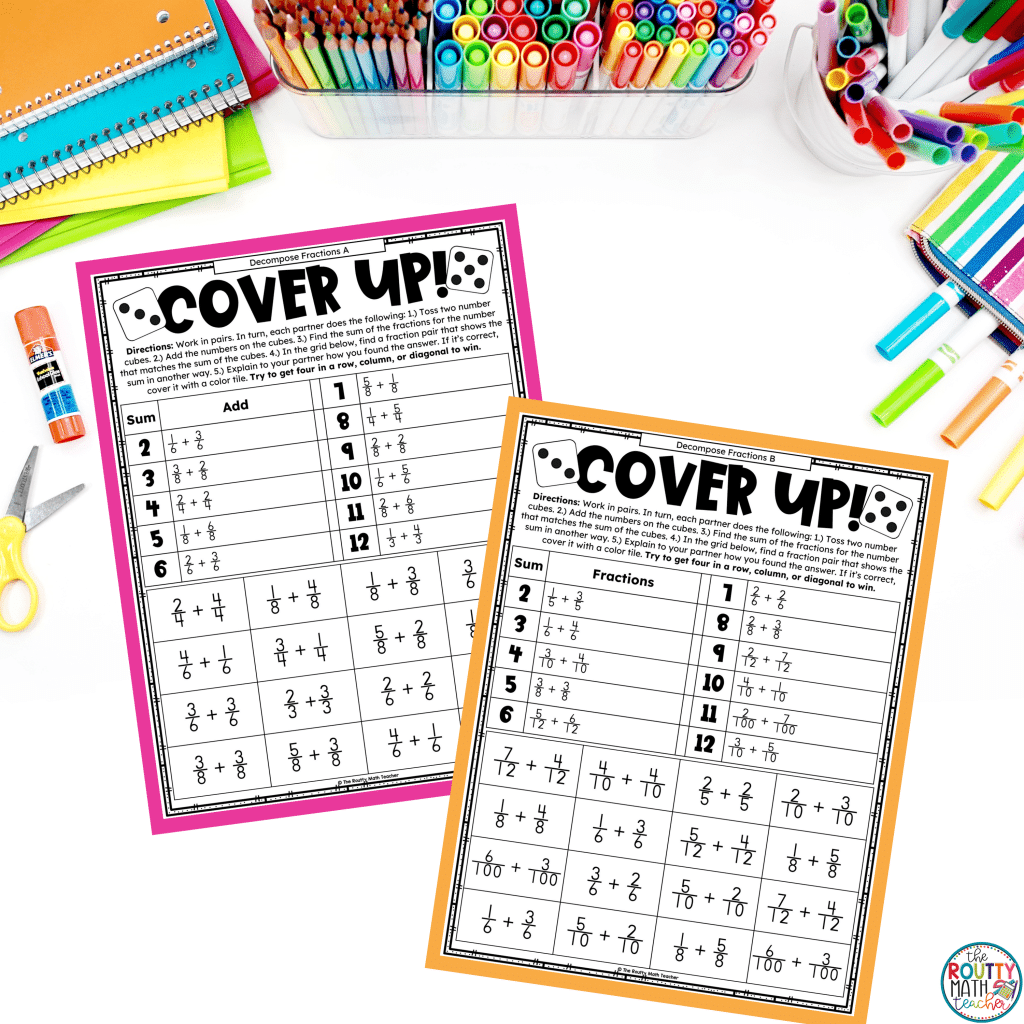
D. Types of Activities for Math Stations
Math station activities can include manipulatives and hands-on materials, problem-solving tasks, puzzles, games, simulations, technology-based activities, and task cards and worksheets for independent practice.
E. Differentiating Instruction through Math Stations
Differentiating instruction through math stations allows teachers to meet the diverse needs of students and ensure each learner is challenged and can access appropriate learning opportunities.
It also allows students to work independently, engage in tasks that match their abilities and interests, and receive targeted support or challenges to promote their mathematical growth.
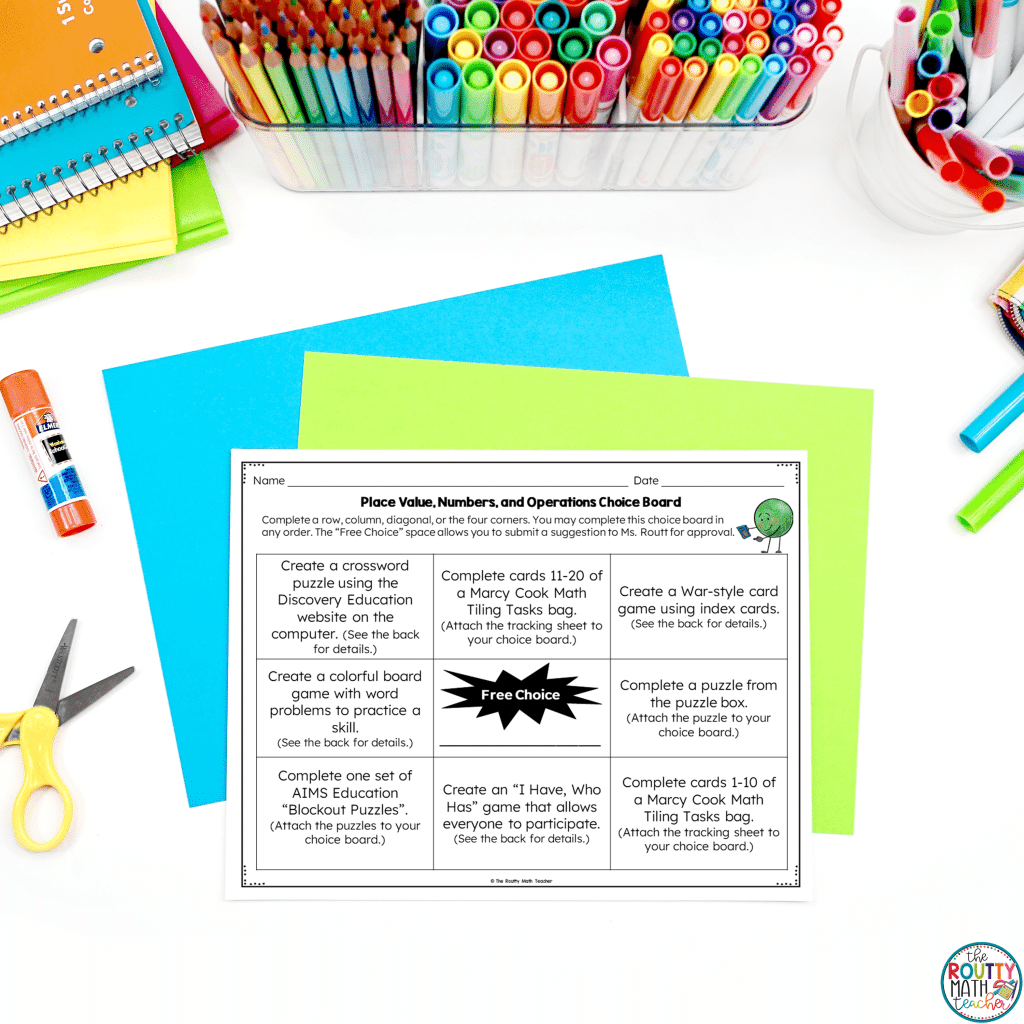
Here are some essential strategies for differentiating instruction within math stations:
- Offer Activities at Varying Levels of Difficulty:
Provide a range of activities to accommodate students with varying abilities, such as offering tasks at different skill levels or including extension activities for advanced learners. This allows students to work at their own pace and select tasks that match their current level of understanding. - Provide Choice Boards or Menus:
Incorporate choice boards or menus within math stations to allow students to choose activities that align with their interests and learning preferences. Provide various options, such as different problem solving tasks, games, or projects, allowing students to select activities that cater to their strengths and engage their curiosity. - Offer Scaffolded Support:
Scaffold support for students who require additional assistance to grasp a concept within math stations to create an inclusive environment that fosters growth and achievement for all students. Here are several examples of strategies and tools that can be used during math stations to scaffold instruction:- Math manipulatives
- Step-by-step instructions
- Graphic organizers and visual aids
- Mnemonic devices and memory aids
- Audio texts and tools
- Technology tools, such as computers and calculators
Guided Math
In addition to the strategies mentioned above, implementing guided math is another effective approach to differentiate instruction through math stations.
Guided math is a small group instructional model where teachers work closely with students in targeted groups based on their specific needs through a “teacher table,” where teachers provide personalized support and instruction.
Guided math sessions may involve explicit instruction, guided practice, and opportunities for students to ask questions and receive immediate feedback. This focused and individualized attention helps to reinforce key concepts, clarify misconceptions, and deepen students’ understanding of mathematical principles.
Teachers can use pre-assessments to determine students’ areas of need and create targeted lessons or activities to address individual students’ strengths, challenges, and learning styles.
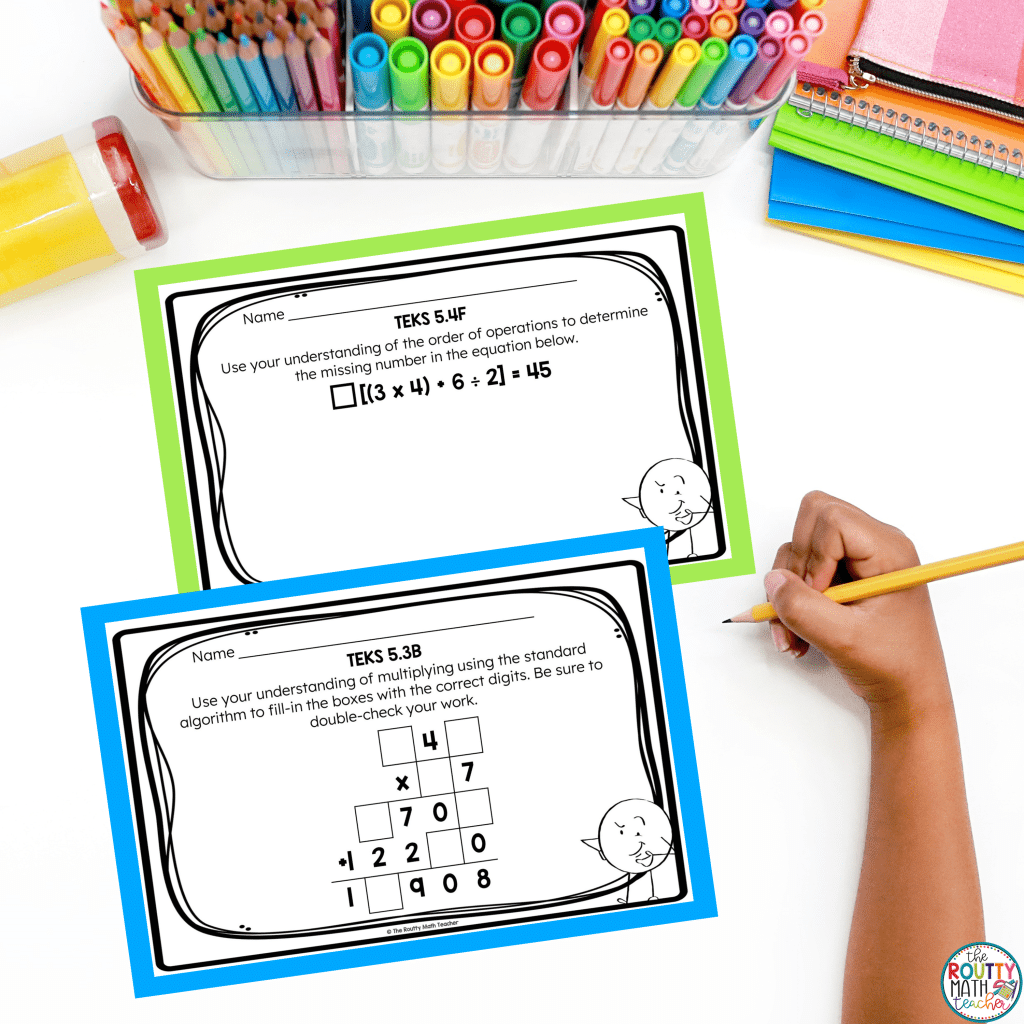
F. Managing and Monitoring Student Progress
Monitoring student progress during math stations can be achieved through checklists or tracking sheets, individual or group conferences, exit tickets or formative assessments, observation and anecdotal notes, and self-assessment tools for students to reflect on their learning.
Additionally, digital tools can be integrated into the monitoring process. Teachers can use educational apps or online platforms that provide real-time data and analytics to track student progress and identify areas of strength and areas that need further attention. These digital tools can generate reports, graphs, or visual representations that offer insights into individual and overall class performance.
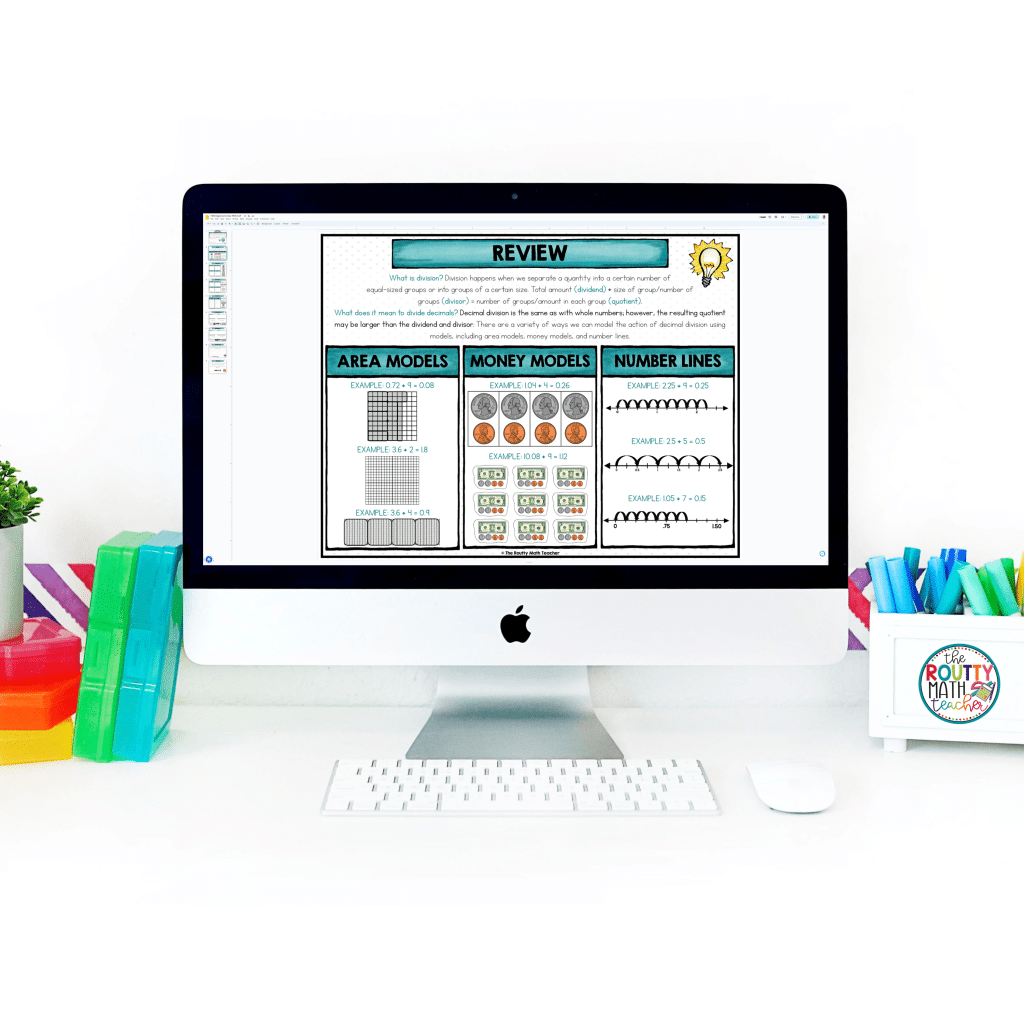
G. Integrating Technology into Math Stations
Since COVID started, teachers have seamlessly integrated technology tools into the everyday classroom experience, utilizing educational apps and websites, virtual manipulatives, online collaborative platforms, data-driven programs for personalized feedback, and digital resources for differentiated instruction and adaptive learning.
Technology forged a new purpose in education as teachers and students became more comfortable using it. As such, integrating technology into math stations provides a unique opportunity to enhance student engagement, provide interactive learning experiences, and offer personalized instruction.
Here are some key ways to effectively incorporate technology into math stations:
- Utilize Educational Apps and Websites:
Many educational apps and websites specifically designed to support math learning, such as interactive activities, games, simulations, and tutorials that reinforce math concepts and skills are available. Encourage students to explore these digital resources independently or collaboratively, promoting active learning and critical thinking. - Incorporate Virtual Manipulatives:
Virtual manipulatives allow students to visualize and manipulate mathematical concepts in a digital environment. Online tools and interactive platforms offer virtual versions of manipulatives like Base 10 blocks, fraction tools, Geoboards, and pattern blocks. Students can explore and experiment with these virtual manipulatives, making connections between concrete and abstract representations of mathematical ideas. Integrating virtual manipulatives within math stations supports conceptual understanding and problem solving skills. - Use Digital Activities for Differentiated Instruction:
Digital activities, such as interactive digital slides, Boom Cards, and digital task cards have become increasingly popular in classrooms, offering new opportunities to engage students and enhance learning experiences. They offer interactive and engaging practice, reinforce math concepts, and provide immediate feedback to students. Digital activities can be tailored to different learning styles and abilities, allowing for differentiation and personalized instruction. By incorporating digital activities into math stations, teachers can tap into the power of technology to create dynamic and interactive learning environments that foster student engagement and promote mathematical growth.
By integrating technology into math stations, teachers can leverage the power of digital tools to enhance student engagement, provide interactive learning experiences, and tailor instruction to individual needs. With careful selection and thoughtful implementation, technology becomes a valuable resource within math stations, fostering a deeper understanding of mathematical concepts and promoting 21st-century skills.
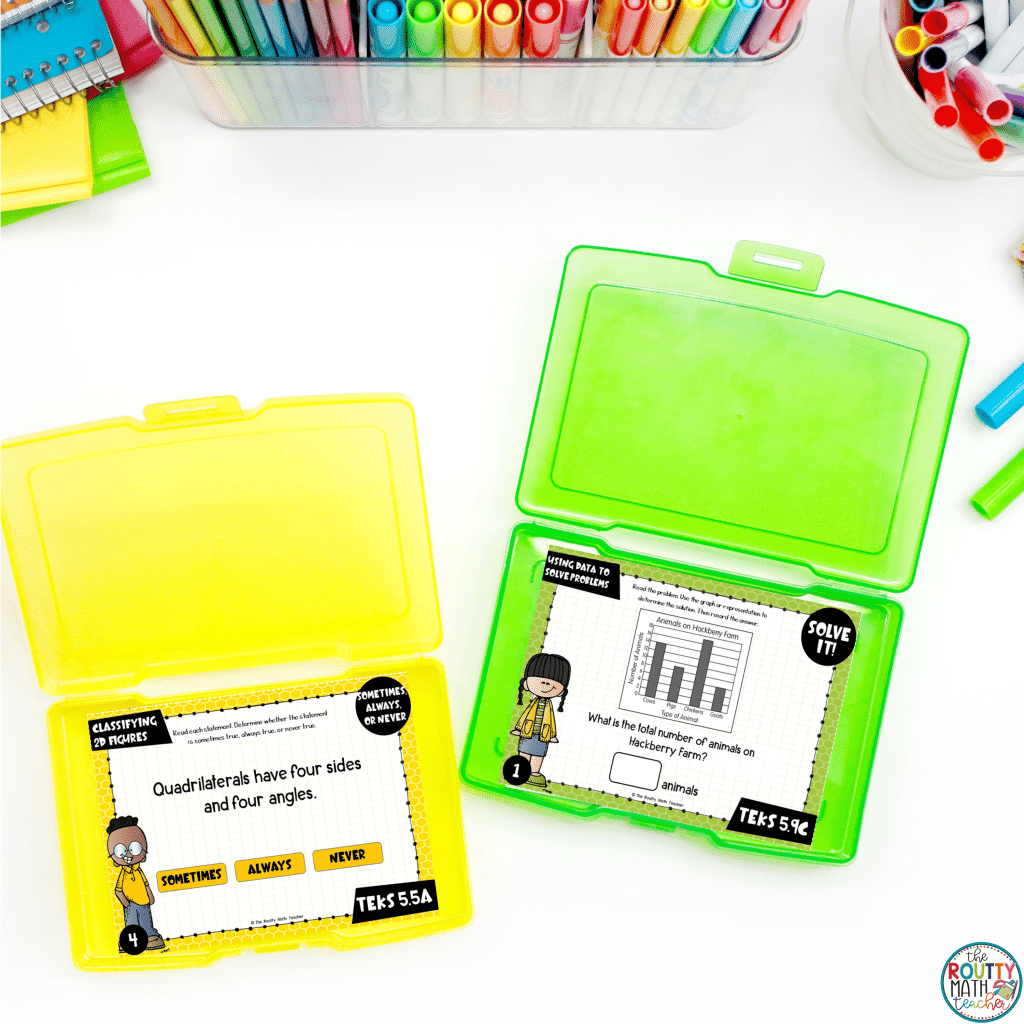
H. Materials and Resources for Math Stations
To successfully implement math stations, it is vital to have essential materials available and organized. Essential materials for math stations include math manipulatives, task cards, math games, technology tools, critical thinking activities, and math-related picture books. Ensure you have storage containers, labels, and organization systems in place. A well-structured and organized math station environment ensures smooth transitions and maximizes instructional time.
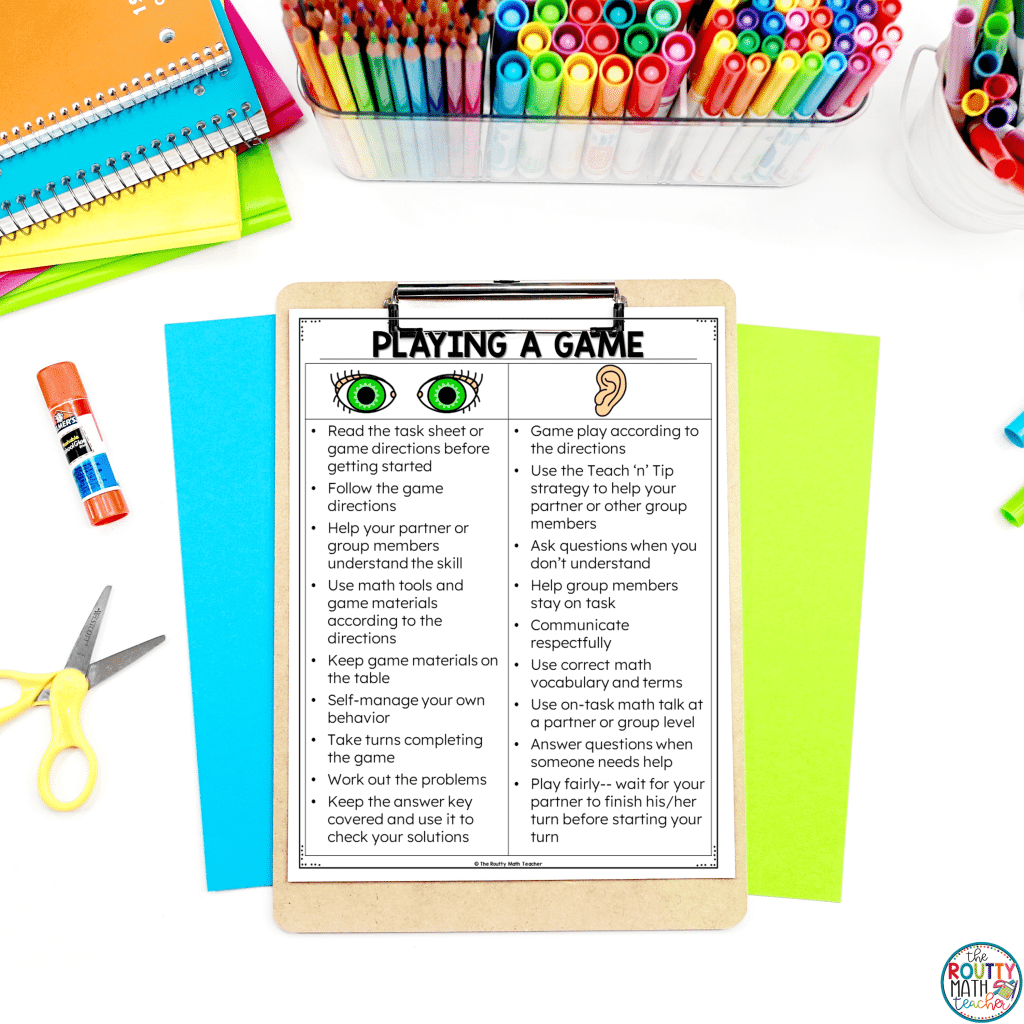
I. Common Challenges when Implementing Math Stations
Implementing math stations can present various challenges that educators must address to ensure a successful implementation. Let’s explore some common challenges and strategies for addressing them:
Time Management
Managing time effectively within math stations can be challenging. It is vital to establish clear expectations for the duration of each station and ensure that students understand how much time they have to complete tasks. Teachers can use visual timers, cues, or signals to help students manage their time.
A math station rotation board can be a valuable tool to help with time management during math stations. By displaying the rotation schedule, timer, and station expectations, students can see the allotted time for each station and monitor their progress. This visual aid allows students to manage their rotation schedule and station time, ensuring they stay on track and complete the required tasks within the designated time frame.
Classroom Management during Independent Work
Maintaining a productive and focused classroom environment during independent work at math stations can be challenging. Establishing clear expectations and routines is crucial. Teachers can use visual cues or anchor charts to remind students of behavior and noise expectations during independent work. Regularly reinforcing expectations, modeling appropriate behavior, and providing positive reinforcement can help establish a well-managed classroom during math stations.
Meeting the Needs of Diverse Learners
Meeting the diverse learning needs of students is one of the most significant barriers to the successful implementation of math stations. Teachers can use differentiation strategies, such as offering different difficulty levels, providing choice boards or menus, and incorporating scaffolded support or extension activities to meet individual student’s needs. Data from assessments or informal observations can help identify students’ needs and inform instructional decisions. Collaboration with special education teachers or instructional coaches can also provide valuable insights and support for meeting the needs of diverse learners.
Implementing a Teacher Table
Implementing a guided math station, also known as a teacher table, before students have established the necessary behaviors for independent work can pose challenges in maintaining an uninterrupted learning environment. Students must develop the skills and self-discipline required to work independently or in small groups while the teacher focuses on a guided group.
Before introducing the guided math station, teachers should explicitly teach and model independent work expectations, such as staying focused, asking peers for assistance, and following established routines. By gradually reinforcing these behaviors and consistently reinforcing expectations, students can build the necessary independence and responsibility to engage in productive work while the teacher provides targeted instruction at the guided math station.
Aligning Activities with Curriculum Standards
Ensuring math station activities align with curriculum standards can be time-consuming; however, it is crucial to carefully select or create activities that directly address the grade level’s specific learning objectives and standards. Collaborating with colleagues and utilizing available curriculum resources can also guide selecting appropriate activities.
By proactively addressing these common challenges, teachers can overcome potential obstacles and create a more effective and engaging math station experience. Flexibility, ongoing reflection, and collaboration with colleagues can help refine practices and ensure math stations meet the diverse needs of students while aligning with curriculum standards.
J. Best Practices for Using Math Stations Effectively
Math stations are a powerful instructional approach for elementary math classrooms to promote active learning, foster student engagement, and accommodate diverse learning needs. However, to ensure the successful implementation of math stations, utilizing best practices that optimize their effectiveness is essential.
By following these best practices, educators can create a structured and engaging learning environment where students actively participate, collaborate, and deepen their understanding of mathematical concepts and skills.
This section will explore essential best practices for using math stations effectively, including providing clear instructions, modeling routines, incorporating student choice, balancing task types, regularly assessing and adjusting activities, and fostering a positive classroom culture.
By embracing these practices, educators can create an enriching math station experience that supports student learning and promotes mathematical growth.
1. Provide Clear Instructions and Expectations for Each Station:
Successfully implementing this practice determines the success of your math station rotation– clear instructions and expectations are essential for ensuring students understand the expectations for each math station. Communicate each station’s learning objectives, tasks, and specific guidelines or rules. Use visual aids, anchor charts, or written instructions to support students’ understanding.
2. Model and Practice Routines and Procedures with Students:
To promote smooth transitions and independent work, model and practice the routines and procedures for math stations. Show students how to navigate the materials, use technology tools, and transition between stations. Provide opportunities for students to practice and reinforce these procedures, ensuring they are confident and familiar with the expectations.
3. Incorporate Student Choice and Voice in Station Activities:
Empower students by incorporating choice and voice in station activities. Offer options or menus of activities that align with the learning objectives, allowing students to select tasks that cater to their interests and abilities. Encourage students to share their ideas, strategies, and solutions, fostering a sense of ownership and engagement in their learning.
4. Offer a Balance Between Structured Tasks and Open-Ended Explorations:
Strike a balance between structured tasks and open-ended explorations within math stations. Structured tasks provide targeted practice and reinforcement of specific skills or concepts. Open-ended explorations allow for creativity, critical thinking, and problem-solving. Offering a variety of task types ensures a well-rounded and comprehensive math learning experience.
5. Regularly Assess and Adjust Station Activities Based on Student Needs:
Continuously assess and monitor student progress and needs within math stations. Collect data through observations, formative assessments, or student work samples. Use this information to inform instructional decisions and adjust station activities as needed. Flexibility and responsiveness to student needs are crucial for optimizing the effectiveness of math stations.
6. Foster a Positive and Supportive Classroom Culture during Math Stations:
Create a positive and supportive classroom culture during math stations. Encourage collaboration, respect, and a growth mindset. Promote a safe and inclusive environment where students feel comfortable taking risks, making mistakes, and seeking help. Celebrate students’ efforts, progress, and achievements, fostering a sense of community and motivation.
By implementing these best practices, teachers can maximize the benefits of math stations, promote student engagement, and foster a productive and supportive learning environment.
A Final Note about Using Math Stations
Implementing math stations in your upper elementary classroom can transform student engagement. Math stations promote student autonomy, collaboration, and a deeper understanding of mathematical concepts by providing a dynamic and interactive learning environment.
But, it’s easy to get lost in the weeds when you go into a situation with no plan like I did with the horse. He knew I did not understand the big picture . . . that I was in control, so he took the reins and sent me into the weeds.
With the tips, strategies, and best practices outlined in this guide, you can confidently incorporate math stations into your instruction and create a math-rich classroom that supports the diverse needs of all students.
Ready to Get Started?
Download my Math Station Management Tools for a carefully curated collection of tools that will empower you to organize and manage your math stations effortlessly. Use the form below to grab your set of tools!
Sound Off!
What’s one tried-and-true strategy you use to make math stations successful? Respond in the comments below.




